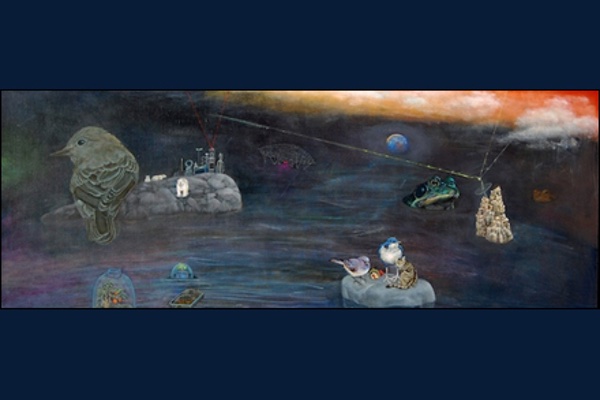“What habits, routines, and rituals
do artists need before they begin work?”
By Jean Eng

A poet has this quirk where she will only write with black pens. If she finds one without a cap, she will seek another “whole” one, and if she suddenly realizes there’s a blue pen in her hand, poetic license will be suspended until metaphors can be resumed in black ink. Prior to a track-and-field event, many athletes pinch their noses, palm their fists, or glare at the finish line—hypnotized by visualizations of a desired outcome. An awful lot of them seem to pray. A university guest speaker begins his lecture by taking three slow breaths followed by a sip of water—relieved that he no longer has to imagine the audience in only their underwear.
What habits, routines, and rituals do artists need before they begin work? Power to those who spring out of bed, fully invigorated by the muse, ready to paint, sculpt, or shoot photos without preliminaries. Most of us need at least breakfast or the illusion that creativity is hindered by an empty stomach. Some rituals are quite elaborate. They involve not only breakfast but pre-dawn exercises, motivational tapes, the methodical layout of all the day’s supplies and tools before organizing exactly the way the studio space has to be in order for work to begin.
For others, merely the act of putting on a paint-splattered apron is enough to segue into the mindset necessary for art productivity. Wagnerian operas or just the radio, memorizing an inspirational quote, bouncing up and down on one’s heels like you are literally about to run right into the canvas—are ways we have, consciously or not, as artists to initiate ourselves for engagement. Often what we use may have absolutely no immediate connection to art other than the fact that we associate its presence with commencement: “Oh…there’s the post; time to fire up the kiln…”
The concept of an artist altar is intriguing especially for those of us who like to have images that represent creative energy in our environment. A plain shelf or location assembled with special objects imbues our task with personal relevance and meaning. These honorary icons could be anything: shells, crystals, candles, sheets of writing, postcards, photos, an old shoe—all subject to rearrangement, change and update. Some artists lack work space away from the distractions and demands of family and home. Time, smuggled in between the care-taking of others, combines with space that is used only after another purpose is completed there first. Altars can provide a locus where artists temporarily “park” the need for active expression and where they can “pick themselves up from” later. A brief pause in front of the altar, touching, re-examining contents, allows artists to remind themselves of their intentions, renew their hearts’ desire to work, and to concentrate on a connection to creative impulse. In situations where fatigue and stress compromise what scant time is freed up for work, re-acquaintance with oneself through an artist altar is worth consideration for its potential generation of activity.
What allows me to enter my work is pretty basic. I function best when the work area is an absolute shrieking mess. The more disheveled, tactile, and sensory the atmosphere, the better. I undertake it as a personal challenge to cull harmony and order—a.k.a the work of art—from such chaos. This is a small problem when you live in a one-bedroom apartment and the living room is your studio. Visitors have delicately remarked on how careful and detailed my canvasses are compared to the cyclone that ripped through the premises. Where another artist needs clean surfaces and vacuumed floors to launch into session, some of us are content when rags and loose papers bury the phone; mustard seasons a table where drawings happen; and lunch is eaten with one leg propped over an edge. There are artists who open a can of solvent or a jar of glue, and the sachet of released vapours in a well-ventilated room is impetus enough for printmaking.
Whatever works and to each their own, no matter how bizarre or neurotic. The whoopee cushion tacked up on a wall to instill levity during excess sobriety is just as valid as a short meditation to relax and loosen up prior to art-making. Talismans, charms, idiosyncrasies. Gentle obsessions, minor habits, or tricks intended for self motivation are never wasted if they contribute toward art production. Of course, if we expend too much effort in unnecessary preparations that exceed the actual time spent doing the work, avoidance may be an issue.
But that’s another story.
Originally published on http://engjarticles.blogspot.com.

